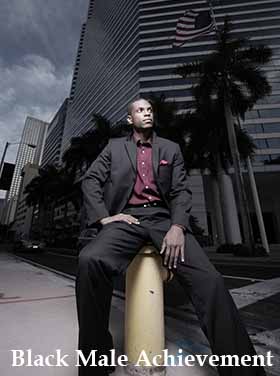The Campaign for Black Male Achievement (CMBA) was founded in 2008. The purpose of CBMA is to grow a national network that focuses on the “growth, sustainability, and impact of leaders and organizations committed to improving the life outcomes of Black men and boys” (Campaign for Black Male Achievement, n.d.). CMBA is an independent organization that supports an expanding network of more than 4,700 individuals who work for more than 2,500 organizations in the United States.
CMBA believes that “As a nation, we cannot truly prosper when any group of people is left behind and forced to exist on the fringes of society” (Campaign for Black Male Achievement, 2016, p. 2). The success/well being of Black men and boys has a strong correlation with the strength of not only the Black family but also the Black community as a whole. In order for the Black community to keep making strides all of us inside of that community must blossom and have the ability to flourish. Then and only then will our community, the Black community, reach its full potential.
CMBA is trying to solve the equity gap between Black men and other race/gender groups that have been more historically successful. CMBA recognizes that Black men and boys face large disparities in education, work, and play. Only 12% of Black boys are at or above their grade level in 8th grade reading, whereas 31% of all boys are at or above their 8th grade reading level (National Center for Education Statistics, 2014). The unemployment rate for Black males is 15%, whichis almost twice the amount for all males, which is 8% (Ruggles, Genadek, Goeken, Grover, & Sobek, 2015). Further, Black students are suspended or expelled for wrong doing at three times the rate of White students. Black students do not get the same leniency as White students and are suspended at preschool and primary ages for infractions such as talking back to teachers or being insubordinate (Kirwan Institute for the Study of Race and Ethnicity, 2014).
These equity gaps have also been found outside of education. In the work force, White applicants are twice as likely to be selected for an interview by a future employer than Black applicants who have names that sound “ethnic” (Bertand & Mullainathan, 2004). In addition, there is not just one race that uses, abuses, and sell drugs, but the Black community specifically has been criminalized as part of the War on Drugs in the United States. Even though people of different races use drugs at similar rates as Black people, Black youths are arrested and incarcerated for drug violations 48% more than are White people (Kirwan Institute for the Study of Race & Ethnicity, 2008).
To bring light to these equity gaps, CMBA has designed a “first-of-its-kind” assessment that records and conveys a city’s effort in working toward black male achievement, called the Black Male Achievement City Index. This index has been used to access 50 cities across the United States that combined include approximately 5.5 million Black males, representing more than 30% of all Black males in the United States (Campaign for Black Male Achievement, 2016 p. 2). CMBA focused on the cities that have been the most proactive in meeting the needs of Black males, highlighting those values central to this work. The index provides the means to track cities' efforts to support Black Male Achievement over time. To this end, CMBA provides guidance to cities who want to build stronger scores on the Black Male Achievement City Index and build a supportive network for the success of Black males in their communities.
CMBA does not critique what cities are doing or not doing in the context of Black men and boys. CMBA focuses on raising awareness of the struggles and issues that Black men and boys are facing in order to close multiple equity gaps that Black males are facing in education, their occupations and fair and just policing. CMBA outlines how to pull stakeholders and resources together in order to re-image/brand Black men in a positive light along with how to create Black male achievement strategies to improve their life outcomes. For more information on the CMBA and the Black Male Achievement City Index, please see the CMBA’s "Promise of Place Report."
References
- Bertand, M., & Mullainathan, S. (2004). Are Emily and Greg more employable than Lakisha and Jamal? A field experiment on labor market discrimination. The American Economic Review, 94(4), 991-1013.
- Campaign for Black Male Achievement. (n.d.). About us. New York, NY: Author.
- Campaign for Black Male Achievement. (2016). The promise of place: Cities advancing black male achievement. New York, NY: Author.
- Kirwan Institute for the Study of Race and Ethnicity. (2008). African American male initiative. Columbus, OH: Kirwan Institute for the Study of Race and Ethnicity, Ohio State University.
- Kirwan Institute for the Study of Race and Ethnicity. (2014). Racial disproportionality in school discipline. Columbus, OH: Kirwan Institute for the Study of Race and Ethnicity, Ohio State University.
- National Center for Education Statistics. (2014). National assessment of educational progress. Washington, DC: Institute of Education Sciences.
- Ruggles, S., Genadek, K., Goeken, R., Grover, J., & Sobek, M. (2015). Integrated public use microdata series. Minneapolis, MN: University of Minnesota.
